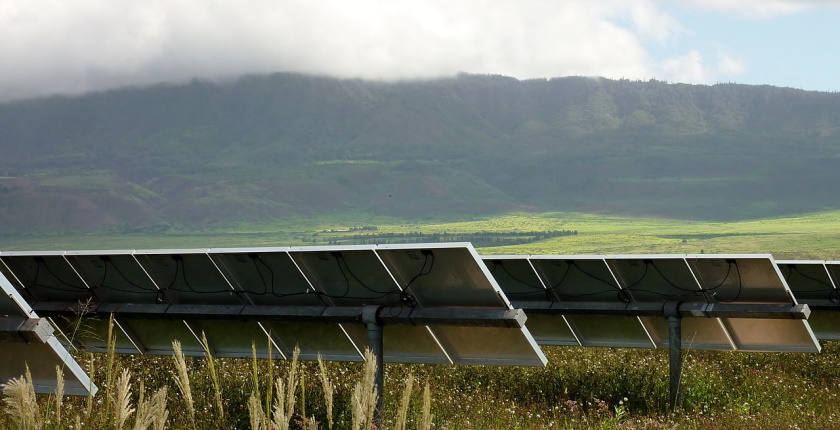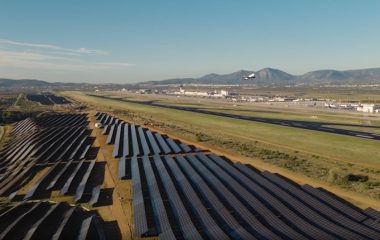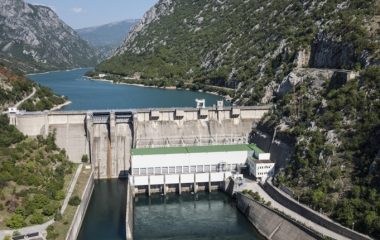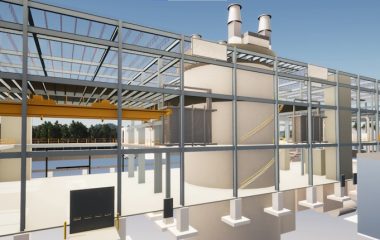
Photo: Merrill Smith / US government works
RES Montenegro Group received the urban planning and technical requirements for a photovoltaic facility with a connection capacity of up to 506 MW. The project in Cetinje is the biggest in Montenegro and one of the largest ones in Southeastern Europe. The company Montenegro Investment and Holdings achieved the same milestone for a 12.5 MW facility.
The Government of Montenegro issued the urban planning and technical requirements for the construction of a photovoltaic park at seven locations in Lastva and Ubli near the country’s historic capital of Cetinje. RES Montenegro Group has determined that the potential connection capacity is 506 MW and estimated the annual output at up to 750 GWh.
The project launched by the firm based in Podgorica is therefore the largest in Montenegro in the sector and also one of the biggest ones in the Balkans. The peak or nameplate capacity of a solar power plant is the maximum production in terms of direct current and it is usually 20% or so bigger than the grid connection capacity. The location spans 769 hectares.
The investors own some of the land for the Cetinje solar power plant
Lukasz Dudka is the majority owner of RES Montenegro Group, with 52%, while Dariusz Piotr Mańkowski holds a 25% stake. The remaining coowners are Żaklina Wojnowska-Gruszka; Podgorica-based firm Consultant Group, controlled by Aleksandar Ražnatović, who is the authorized representative; and Radosław Paulewicz.
The investors already own some of the lots on which they want to build the facility. Namely, the proprietor is RES Adria Group, founded by everyone listed above except Consultant Group.
The government also issued the urban planning and technical requirements to Montenegro Investment and Holdings from Kotor. The company intends to install a solar power plant of 12.5 MW in Draževina, on the territory of the capital city of Podgorica. The document doesn’t specify whether the size is expressed in the terms of nominal or connection capacity. The site has 19 hectares.
Albania hosts biggest project under construction in Western Balkans
Of note, according to an unconfirmed news report, Romania’s state-owned Hidroelectrica is about to get the concession for a photovoltaic facility of up to 1.5 GW, which would make it the biggest project in the pipeline in Europe. Rezolv Energy said in November that it would start building a solar power plant of over 1 GW in June in the country.
The region tracked by Balkan Green Energy News seems to have caught up with the rest of Europe with megaprojects in the solar power segment, at least when planning is concerned. Turkey and Greece made the most progress in implementation. Looking at the Western Balkans alone, Albania hosts the biggest facility under construction.
The construction is underway in the Turkish Konya province, south of Ankara, of a plant with 1.35 GW in nameplate capacity, translating to 1 GW in connection power. The site is in Asia Minor.
Turkey and Greece made the most progress in implementation among Southeastern European countries
The largest completed photovoltaic unit in Southeastern Europe is in northern Greece and belongs to HELLENiQ Energy. It has a capacity of 204.3 MW.
Greek coal and electricity producer Public Power Co., which is undergoing transformation toward renewable sources, is building a 550 MW facility in the same area via its subsidiary PPC Renewables. Enipeas won a strategic investment status on a national level for its solar power project with a planned peak capacity of 700 MW in Thessaly.
German company Profine Energy intends to install a floating solar power plant in Bulgaria with a capacity of 500 MW to 1.5 GW.
The biggest project in the Western Balkans is Agrosolar Kula in Serbia
In Serbia, Fintel energija and MK Group launched the 660 MW Agrosolar Kula project in 2021 for the simultaneous production of agricultural crops and electricity from solar energy. El Sun Energy plans to build a 950 MW solar power plant in Croatia.
Etmax, based in Banja Luka in Bosnia and Hercegovina, recently landed a concession for a 500 MW facility in Nevesinje in the country’s southeast.
Iberdrola operates the biggest solar park in Europe. The 590 MW Francisco Pizarro facility in Extremadura is in western Spain. It was commissioned in August.
Solar power projects for 1.4 GW in total were recently announced in Montenegro
As for Montenegro, news has lately surfaced about several huge investments, mostly via the urban planning and technical requirements. There are still no utility-scale solar power plants in the country.
CWP Europe plans to install a solar power plant called Montechevo with a total capacity of 400 MW in Cetinje. A section would be placed in the cadastral municipality of Lastva, which RES Montenegro Group is also eyeing for its own project.
Sunrise Europe, based in the seaside town of Kotor, intends to set up a solar park with a peak capacity of 220 MW in Šavnik while the company Obnovljivi izvori energije is preparing to build a 225 MW facility in Cetinje. BSD Mont claimed it would invest over EUR 200 million but didn’t provide many details.
EPCG – Željezara solar, the newly founded subsidiary of state-owned coal and power utility Elektroprivreda Crne Gore (EPCG), has announced that it would install panels on land and roofs of the buildings within the defunct steel plant in Nikšić. The combined capacity would amount to 47 MW.
EPCG and UGT Renewables from the United States agreed in November to join forces in the development of renewable energy and storage projects.
The Briska gora and Velje brdo projects have 50 MW each planned for the first phase. The procedures have been repeatedly delayed. They could reach 262 MW and 300 MW, respectively. Briska gora is a joint undertaking of EPCG and Fortum, where each company holds a 49% interest and Sterling and Wilson controls the remainder.
Montenegro recently lowered the value-added tax for solar panels. EPCG has a program called Solari for rooftop solar panels for households and companies.


















Be the first one to comment on this article.